✨ CBSE Class 10 Science – Chapter 13: Our Environment ✨ Ultimate Expert Guide by Grandmaster Bikram Sutradhar 🚀

✨ CBSE Class 10 Science - Chapter 13: Our Environment ✨ Ultimate Expert Guide by Grandmaster Bikram Sutradhar 🚀
📚 What You’ll Learn in This Guide? ✅ Complete NCERT Solutions with step-by-step explanations ✅ Ecosystem & its Components (Biotic & Abiotic) ✅ Food Chains, Food Webs & Trophic Levels ✅ Energy Flow in an Ecosystem & 10% Law ✅ Biological Magnification & its Impact ✅ Ozone Layer & Its Depletion ✅ Waste Management (Biodegradable & Non-Biodegradable Waste) ✅ Smart Memory Tricks & Shortcuts for Quick Learning
Environment SirBikramSutradhar bAstronautWay Chapter 13: Our Environment CBSE NCERT Solutions
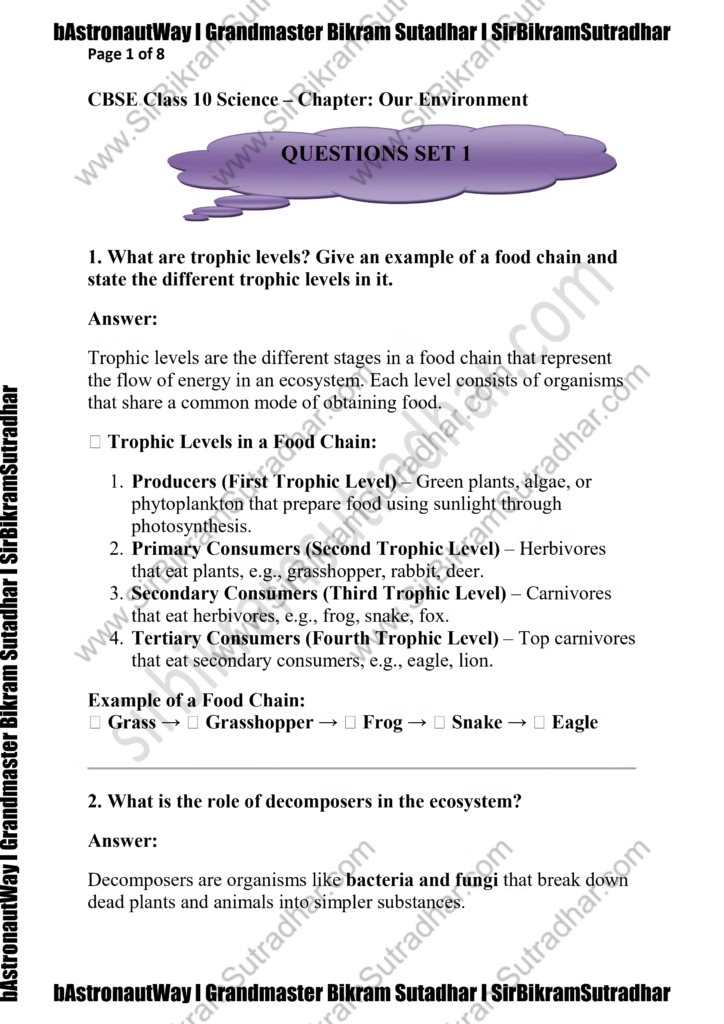
🌟 Key Topics Covered in CBSE Class 10 Science – Chapter 13
🌿 Ecosystem & Its Components
- Definition: An ecosystem consists of all living organisms interacting with their physical environment.
- Biotic Components: Living organisms (Plants, Animals, Microorganisms).
- Abiotic Components: Non-living factors (Water, Air, Soil, Sunlight).
🌮 Food Chains, Food Webs & Trophic Levels
- Food Chain: A linear sequence of organisms through which nutrients and energy pass.
- Trophic Levels:
- Producers: Plants (Autotrophs) – First Trophic Level
- Primary Consumers: Herbivores (Deer, Rabbit) – Second Trophic Level
- Secondary Consumers: Carnivores (Frog, Snake) – Third Trophic Level
- Tertiary Consumers: Top Carnivores (Lion, Eagle) – Fourth Trophic Level
- Food Web: A network of interconnected food chains in an ecosystem.
🔋 Energy Flow in an Ecosystem & 10% Law]
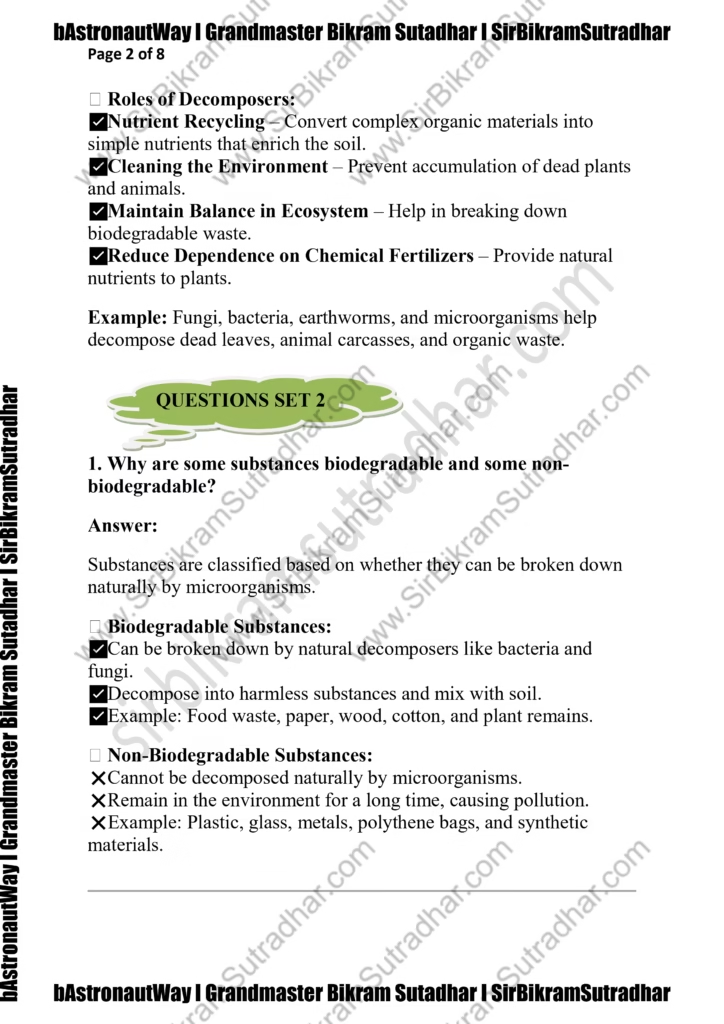
- Energy Flow: Sun ➔ Plants ➔ Herbivores ➔ Carnivores ➔ Decomposers
- 10% Law: Only 10% of energy is transferred from one trophic level to the next; the rest is lost as heat.
🪙 Biological Magnification & Its Impact
- Definition: Increase in toxic substances (like pesticides) as they move up the food chain.
- Example: DDT absorbed by plants ➔ Insects eat plants ➔ Birds eat insects ➔ Humans eat birds ➔ DDT accumulates in humans.
🌍 Ozone Layer & Its Depletion
- Ozone Layer: Protective shield in the stratosphere that absorbs harmful UV rays.
- Causes of Depletion:
- CFCs (Chlorofluorocarbons) from ACs, Refrigerators, Aerosol sprays.
- Effects:
- Skin cancer, Cataracts, Reduced crop yield.
- Solutions:
- Reduce CFCs, Use eco-friendly products, International agreements like the Montreal Protocol.
🛠 Waste Management (Biodegradable & Non-Biodegradable Waste)
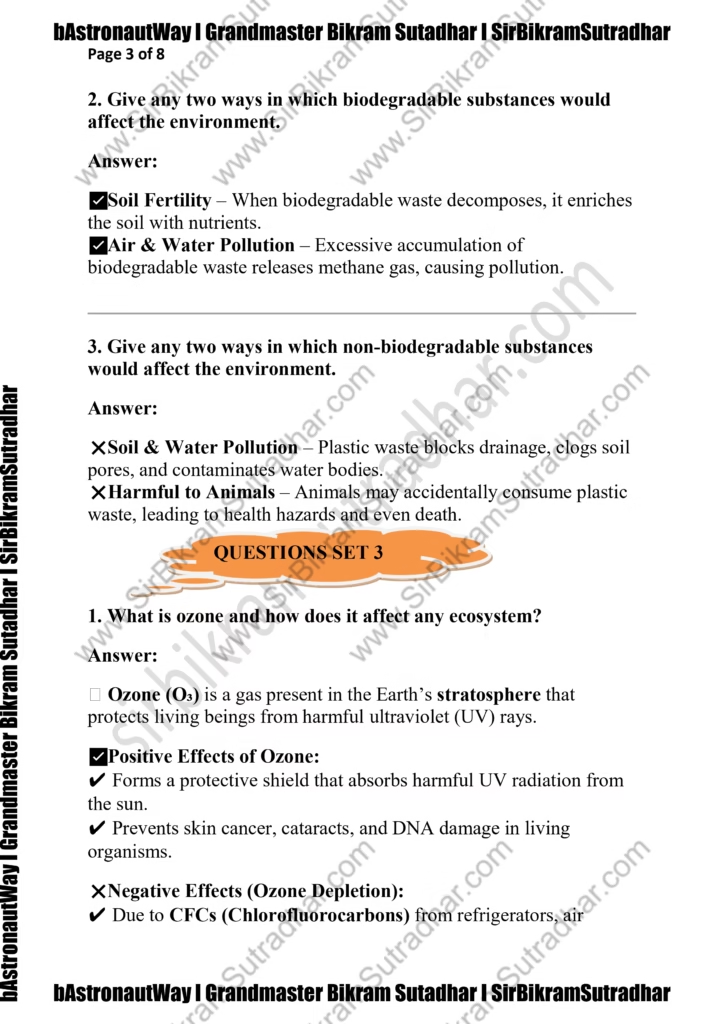
- Biodegradable Waste: Decomposes naturally (Food, Paper, Cotton, Leaves).
- Non-Biodegradable Waste: Does not decompose (Plastic, Glass, Metals).
- Problems Caused by Non-Biodegradable Waste:
- Land & water pollution
- Kills marine life
- Blocks drains, causing floods
- Solutions:
- Reduce, Reuse, Recycle (3Rs)
- Proper disposal of waste
🎯 Important CBSE Board Exam Questions
- What are trophic levels?
- Differentiate between biodegradable and non-biodegradable waste.
- Explain biological magnification with an example.
- Mention any two steps taken to reduce it.

🔧 Smart Study Tips & Tricks ✨ Mnemonic for Trophic Levels: PPST (Producers → Primary → Secondary → Tertiary) ✨ 3Rs of Waste Management: Reduce, Reuse, Recycle ✨ 10% Law
🚀 Why This Guide is a Must-Have for CBSE Class 10 Students? ✅ Expertly Curated Content – By Grandmaster Bikram Sutradhar 🚀
💪 Ace Your CBSE Class 10 Science Exam with This Ultimate Guide! 🏆 💡 Start Learning Today & Score High Marks! 🌟

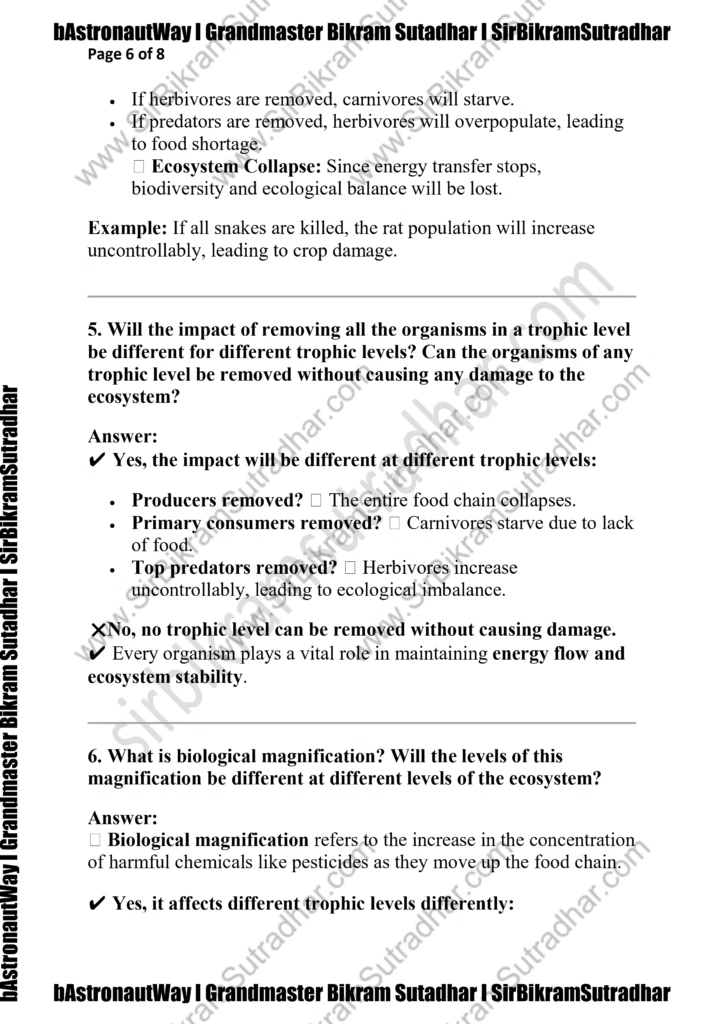
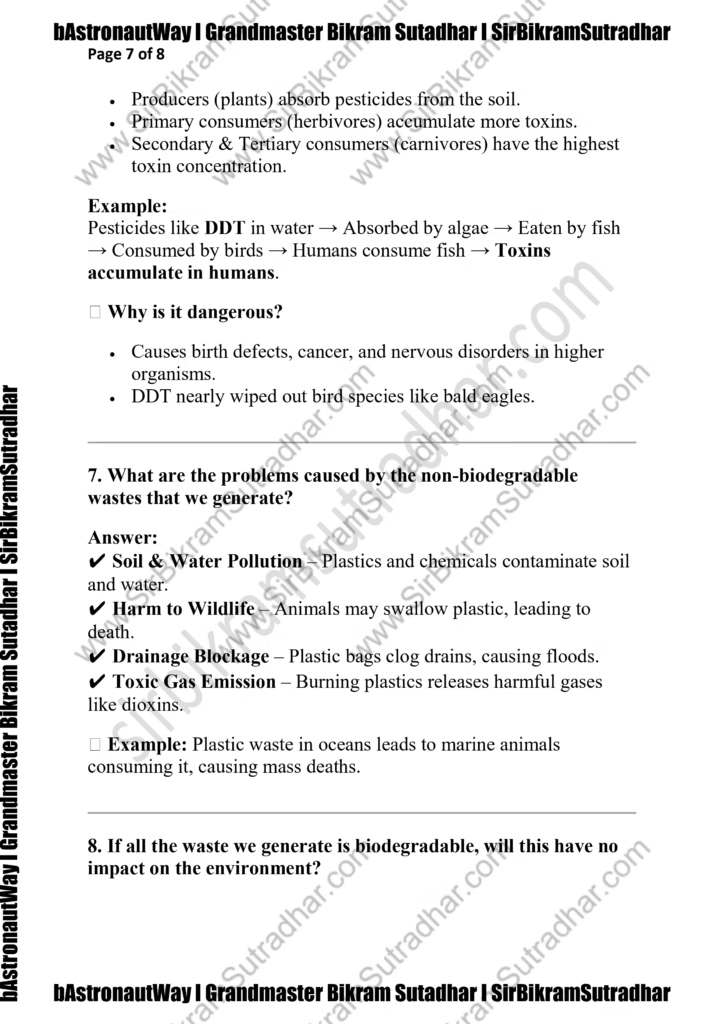
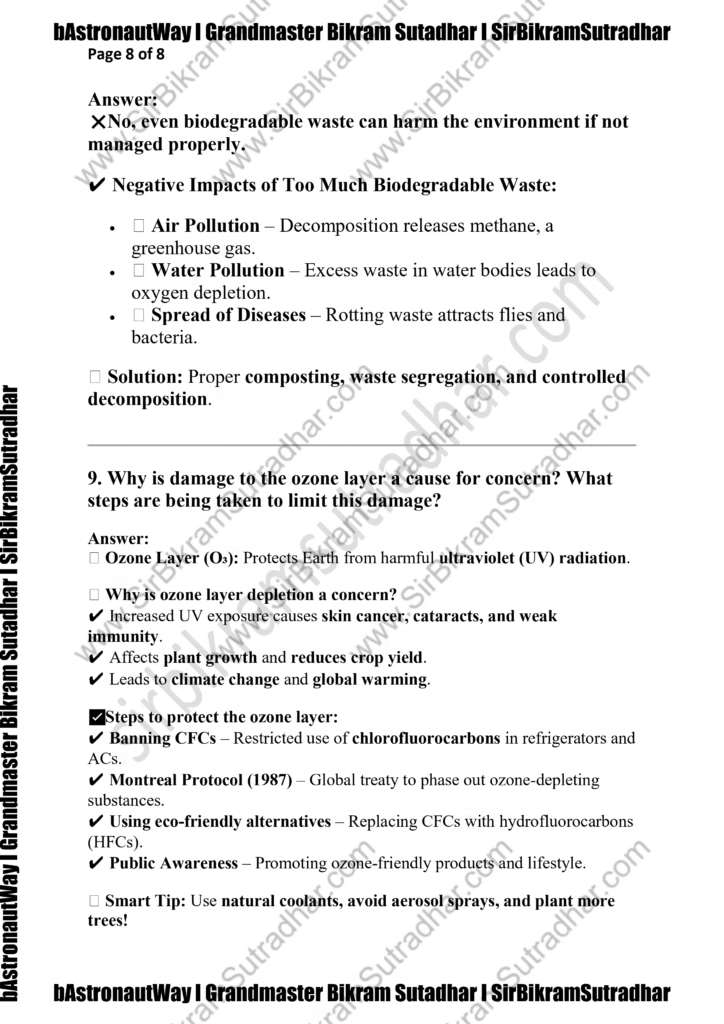
Written By
Full Stack Developer and 5-Time World Record Holder, Grandmaster Bikram Sutradhar
bAstronautWay
SirBikramSutradhar on YouTube
More Story click the link
ICSE CLASS 10 ICSE CLASS 10 BIOLOGY BASTRONAUTWAY SirBikramSutradhar Bikram Sutradhar GrandMaster Bikram Sutradhar selina biology solutions ICSE Biology Selina Solution
class 10 Maths ncert solution.
NCERT Solutions
CBSE Class 10 Mathematics (2025) NCERT Syllabus:
CBSE Class 10 Mathematics NCERT Syllabus (2025) – Chapter-Wise List
CBSE Class 10 Mathematics NCERT Syllabus (2025) – Chapter-Wise List
chapter 4. Quadratic Equations
chapter 5. Arithmetic Progressions
chapter 6. Triangles
chapter 7. Coordinate Geometry
chapter 8. Introduction to Trigonometry
chapter 9. Some Applications of Trigonometry
chapter 11. Areas Related to Circles





